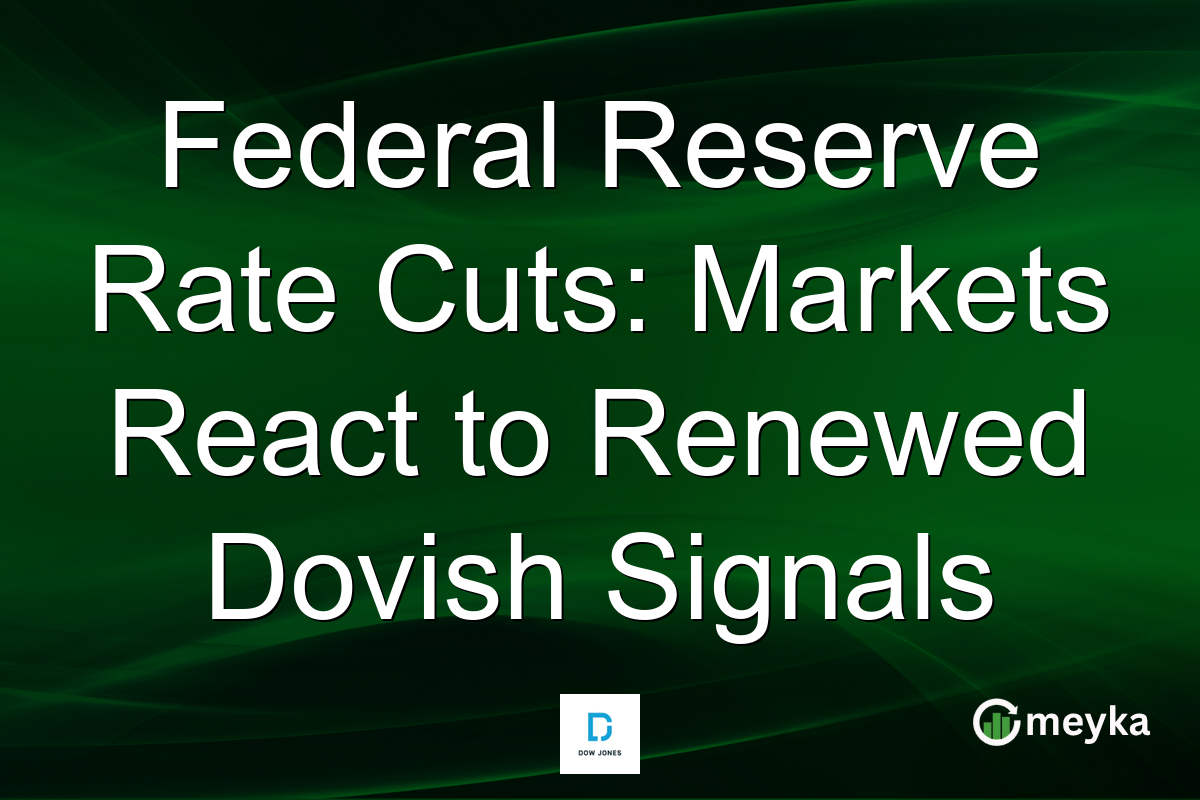Federal Reserve Rate Cuts: Markets React to Renewed Dovish Signals
The Federal Reserve’s recent openness to potential rate cuts has captured the attention of investors worldwide. Faced with persistent inflation and signs of slowing economic growth, the Fed’s dovish signals suggest a strategic shift. This Federal Reserve rate cut news has sparked volatility in financial markets as investors recalibrate their expectations and portfolios. Today, major indices like the S&P 500, Dow Jones, and Nasdaq are responding sharply to these developments.
Understanding the Federal Reserve’s Dovish Stance
The Federal Reserve’s consideration of rate cuts comes at a critical juncture for the US economy. With inflation still above desired levels and economic growth showing signs of deceleration, the Fed has softened its usual hawkish tone. This shift aims to support economic activity and maintain credit conditions conducive to growth. By lowering borrowing costs, the Fed hopes to stimulate spending and investment, addressing the slowdown. The Fed rate cut impact extends beyond these immediate economic goals. Lower interest rates typically lead to lower mortgage rates and cheaper loans for businesses, potentially invigorating sectors like housing and manufacturing. Such policy moves are also intended to stabilize financial markets, which had previously been on edge due to rate hike concerns. Bloomberg reports that this dovish pivot has prompted an optimistic reassessment across global markets.
Market Reaction to the Fed’s Rate Signal
The anticipation of rate cuts has already impacted major stock indices significantly. For instance, the S&P 500 (^GSPC) fell slightly, closing at 6600.35, marking a day-to-day slide of 0.09%. Despite this, its strong annual performance (up 2.08%) showcases resilience. Meanwhile, the Dow Jones Industrial Average (^DJI) moved upward by 0.57%, ending at 46018.32. This rise reflects investor optimism, aligning with expectations that businesses will benefit from cheaper borrowing costs. The Nasdaq Composite (^IXIC), however, slipped by 0.32%, indicating some hesitation among tech investors who might be wary of heightened market volatility. Reuters highlights this mixed sentiment as a common reaction to policy shifts.
Interest Rate Forecast and Investor Expectations
The interest rate forecast now includes a potential series of cuts, which could bring the rates down gradually through the end of the year. The US central bank policy is closely watched, and while specific rate targets remain fluid, market analysts speculate on cuts by as much as 50 basis points. For investors, this means revisiting asset allocations to align with the anticipated more accommodating monetary policy. High-growth sectors, particularly in tech and real estate, might see increased interest as they typically benefit from lower rates. On another note, commodities like gold, often a haven in dovish environments, might see a resurgence in demand. Investors are encouraged to remain agile, leveraging platforms like Meyka for real-time insights and financial forecasting. As the Fed continues to navigate these complex economic waters, proactive portfolio adjustments could be the key to maximizing potential gains.
Final Thoughts
As the Federal Reserve signals potential rate cuts, investors must adjust to a fluid market environment. The renewed dovish sentiment is set against a backdrop of persistent inflation and growth challenges, prompting varied reactions across major indices like the S&P 500, Dow Jones, and Nasdaq. Understanding the implications of this policy shift is crucial. Investors should consider the strengths and challenges of different market sectors, as lower borrowing costs may invigorate growth sectors while offering a stabilizing influence across the broader market. For those navigating these changes, staying informed and ready to adapt investment strategies will be essential. Platforms like Meyka offer tools to analyze real-time market data and predict trends, empowering investors to make informed decisions amidst evolving market conditions. With the economic landscape shifting, thoughtful adjustments and an eye on key metrics will provide the best opportunity to capitalize on upcoming changes.
FAQs
Federal Reserve rate cuts typically lead to lower interest rates, making borrowing cheaper. This can spur economic activity and support higher stock prices. However, initial reactions can vary, with markets sometimes experiencing volatility as investors recalibrate their strategies.
Rate cuts generally benefit interest-sensitive sectors like real estate and consumer durables, as lower rates reduce borrowing costs. Technology and growth stocks can also thrive. Conversely, financials like banks may face margin pressure as lending rates fall.
Investors should assess market conditions and sector performance, focusing on sectors likely to benefit from lower rates. Diversification strategies could help manage risk, while tools like Meyka can offer insights into market trends and forecast-driven decisions.
Disclaimer:
This is for information only, not financial advice. Always do your research.






